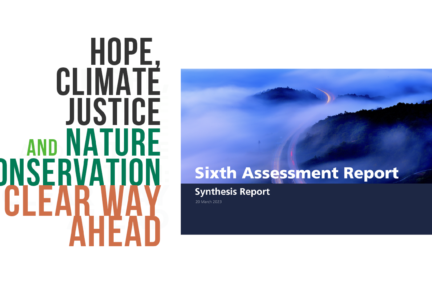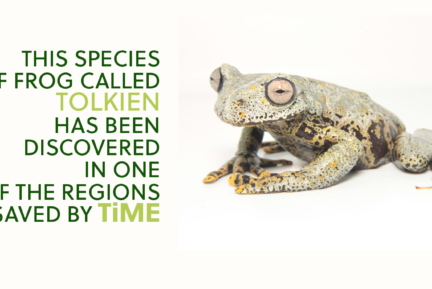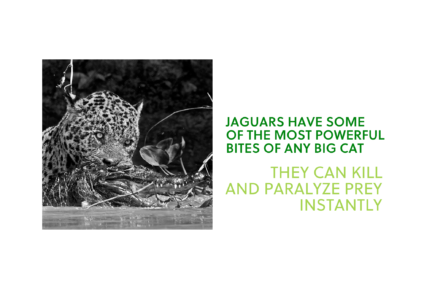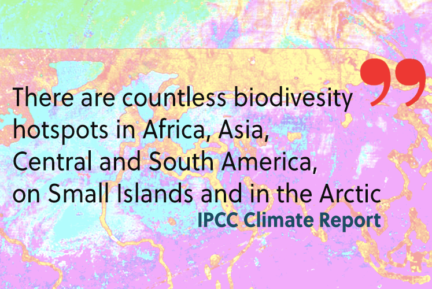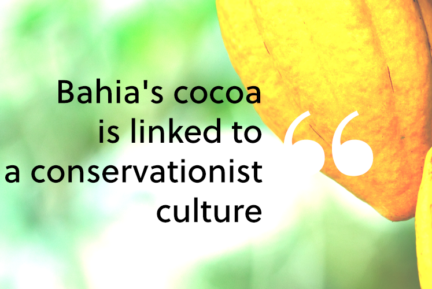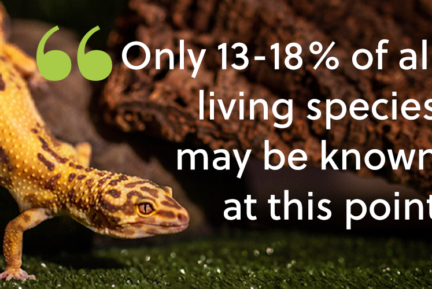Flowers, such as orchids and magnolias, don’t cross most people’s mind when thinking about conservation. It makes sense: we are used to seeing them inside cities, homes, gardens, and at weddings and events, but they are rarely depicted in wilderness photos, which emphasize greenery, desert, or snow much more than vibrant bloom. But these flowers are, like any other living thing, a vital part of the ecosystem. The cloud forest that covers El Alto de Ventanas, a region in northwest Colombia, is vibrant with Critically Endangered orchids and magnolia trees; in fact, new species continue to be discovered in the area regularly. Just last month, two new species were announced.
SalvaMontes (“forest saviors”) is responsible for this discovery, bringing the number of orchid species its staff have discovered to a total of nine. SalvaMontes is a Colombian organization whose mission is to preserve a rare Magnolia species that exists solely in this region. Carlos Mauricio Mazo is the local who decided to act to protect these trees, and in 2016 he recruited a group of biologists, lawyers, forest engineers, ecologists, ornithologists, and other Colombians from the area who wanted to do something about the shrinking forest that is home to some of the most diverse ecosystems on Earth. Since then, SalvaMontes has acquired 528 hectares in the region, which they conserve and study with dedication.
A crucial corridor that can connect already-protected patches of forest in El Alto de Ventanas is available for your vote for TiME’s next purchase. It is a highly diverse patch of the tropical Andes, covered with cloud forest, where the sky seems to touch the tips of the trees. Cloud forests comprise only one percent of the world’s woodlands. Their high humidity makes them home not only to trees and wildlife, but also ferns, mosses, lichens, and orchids. This environment grants the forest a magical, otherworldly atmosphere and highlights the fundamental symbiosis of all living things: mosses carpet the forest floor and release nutrients into the soil; lichens convert carbon dioxide to oxygen, absorb pollutants, and are used by birds as nesting material; ferns and orchids grow on the trees, receiving nutrients from the bark and from fungi. It has even been suggested that the fungi, in turn, provide the host tree with nutrients, forming a full circle of orchid, fungus, tree.
A communal commitment to the forest
SalvaMontes’s work is threefold: protecting the land and maintaining it as a nature reserve; promoting research and understanding of local species; and raising awareness in the local community and promoting solutions that enable locals to preserve the land without losing sources of income. Since the foundation is comprised almost entirely of Colombians, many of them from the area, the connection and communication with locals are seamless. Apart from working with schools, SalvaMontes also cooperates with farmers and provides workshops demonstrating how they can salvage trees that sprout in the pastures instead of cutting them down — previously the farmers’ preferred way to deal with such obstacles. Now, they extract the seedling and propagate it, then sell the sapling for reforestation. Even a local school now maintains a propagating center. The economic benefit, together with education on the important role of the trees in the ecosystem, create strong incentives to invest in the effort of propagating trees, instead of simply getting rid of the annoyance.
The presence of SalvaMontes in the area creates more subtle effects as well. Sebastián Vieira, one of SalvaMontes’s founders, told TiME about a local couple that worked in charcoal production and cut down trees. After being introduced to SalvaMontes, they began working for the organization and even feed the local birds. Many birds now trust them completely, coming close enough to allow them to take pictures of rare species (such as the Vulnerable Black-and-gold Tanager and Lemon-browed Flycatcher).
Flowers in the clouds
Vieira told TiME that his fascination with El Alto de Ventanas goes back long before SalvaMontes’s founding in 2016. “Biodiversities converse there,” he said; “the region is influenced by the South American Pacific, Central America, and the western Andes. The climate conditions and high precipitation of the cloud forest allowed unique creatures to evolve there and exist only there.” In the six years since its establishment, SalvaMontes discovered previously unknown, endemic species of orchids, frogs, and trees.
The remarkable biodiversity of the orchids alone in this area alone is breathtaking: the newly discovered orchids display a magnificent rainbow of colors that seem to glitter and glow. The Critically Endangered Dracula lemurella orchid has a very different, sinister-looking, and fur-like appearance. And the Endangered and endemic Schlimm’s Phragmipedium looks different again with its white and pink petals. The incredible diversity of orchids was the topic of Darwin’s subsequent book to On the Origin of Species, and this diversity is believed today to be rooted in the ability orchids developed to cling to trees and climb up the Andes and New Guinea’s Highlands. This means that we owe our ability to marvel at orchids to the cloud forests.
Mammals and amphibians find home in this forest too: Handley’s Slender Opossum is a Critically Endangered, endemic species of opossum with pointy ears, that is found only in this region. Vulnerable Silvery-brown Tamarins jump between the trees. Vulnerable Reseda Glass Frogs and blood-red Andean Poison Frogs are only found in Colombia, as are the colorful Red-bellied Grackle and aforementioned Lemon-browed Flycatcher — one green and yellow, the other red and black, together casting flying rays of colors in the canopy.
However, it was the endemic Almenegra de Ventanas magnolia that triggered the foundation of SalvaMontes. It is Critically Endangered, mostly due to deforestation from cattle ranching and farming. In 2016, when SalvaMontes was established, only 12 individuals were known. Today, there are 61 individual trees — a fivefold increase in just over five years!
Magnolia trees are famous worldwide for their large, beautiful flowers. The flowers vary considerably from species to species, and they are related to the Nymphaea and other tropical flowers. More astonishing than their beauty is their history: magnolias have existed on Earth for 95 million years. This means they evolved before the Tyrannosaurus rex! At that time, bees did not yet exist, so magnolias are pollinated by beetles, forcing them to develop thick carpels to withstand the beetles’ jaws. This reminds us, again, that the beauty of flowers is not a product of gardening and they are not art exhibits. I close my eyes and try to imagine a pterodactyl grazing the tops of a magnolia tree, which stays standing generation after generation to see the tamarins begin to climb it and the orchids bloom on its branches.
The Circle of Life
This cooperation between magnolias and beetles shines yet more light on the unfathomable complexity of life. Biodiversity is the result of many interdependent species, some of which survived the mass extinction that killed the dinosaurs, some of which developed later, and some of which have climbed on top of others, pollinating them, feeding them, or providing shelter. Species that came into existence millions of years apart have coadjusted to form a stable ecosystem, and it is this integration that has allowed for the explosion of life forms and their further evolution, as the orchid first climbed up a tree and a mountain to pave the way for the tens of thousands of orchid species known to science today.
In a similar fashion, organizations dedicated to the conservation of this wonder must find creative, meaningful ways to integrate the forest and the lives and livelihoods of the people who live close by. SalvaMontes strives to continue this delicate balance among of all biodiversity, including Homo sapiens, and to save the unique world that can only exist in El Alto de Ventanas of the western Andes. With your vote and donation, TiME can purchase 246 more hectares of this habitat; if selected, this land will be protected by SalvaMontes, providing shelter for the endemic species within the cloud forest and encouraging reforestation, education, local involvement, and sustainable agriculture.
We thank Sebastián Vieira for his help preparing this article.
Sources
Asplund, Johan and David A. Eardle. “How lichens impact on terrestrial community and ecosystem properties”. Biological Reviews 92:3 (August 2017): 1720-1738.
Britannica, T. Editors of Encyclopaedia. “cloud forest.” Encyclopedia Britannica. https://www.britannica.com/science/cloud-forest-ecology.
Britannica, T. Editors of Encyclopaedia. “moss.” Encyclopedia Britannica. https://www.britannica.com/plant/moss-plant.
Cameron, Duncan D. et al. “Mutualistic mycorrhiza in orchids: evidence from plant–fungus carbon and nitrogen transfers in the green-leaved terrestrial orchid Goodyera repens”. New Phytologist 171:2 (July 2006): 405-416.
Evich, Philip. The botany of magnolias. Smithsonian Gardens. Published December 2021, accessed October 2022. https://gardens.si.edu/learn/blog/the-botany-of-magnolias/
Feng, Yan-Jie et al. “Phylogenomics reveals rapid, simultaneous diversification of three major clades of Gondwanan frogs at the Cretaceous–Paleogene boundary”. Proceedings of the National Academy of Sciences 114:29 (July 2017): E5864–E5870.
National Park Service, Editors of. “Lichens – the little things that matter”. National Park Service. Published May 2018, accessed October 2022. https://www.nps.gov/articles/lichen-and-our-air.htm
Rasmussen, Hanne N. and Finn N. Rasmussen. “The epiphytic habitat on a living host: reflections on the orchid–tree relationship”. Botanical Journal of the Linnean Society 186:4 (March 2018): 456-472.
Ruivo, Eric Bairrão et al. “The Silvery-Brown Tamarin (Saguinus leucopus) Conservation Project”. Neotropical Primates 13:3 (December 2005): 36-39.
Valencia, Lina Maria. “Conserving the Endangered silvery-brown tamarin in highly degraded forests”. Conservation Leadership Programme. Published 2014, accessed October 2022. https://www.conservationleadershipprogramme.org/project/silvery-brown-tamarin-colombia/
Vieira-Uribe, Sebastián et al. “Two new species of Lepanthes (Pleurothallidinae, Orchidaceae) from the Alto de Ventanas, Colombia”. Phytotaxa 567:2 (October 2022): 149-161.


































